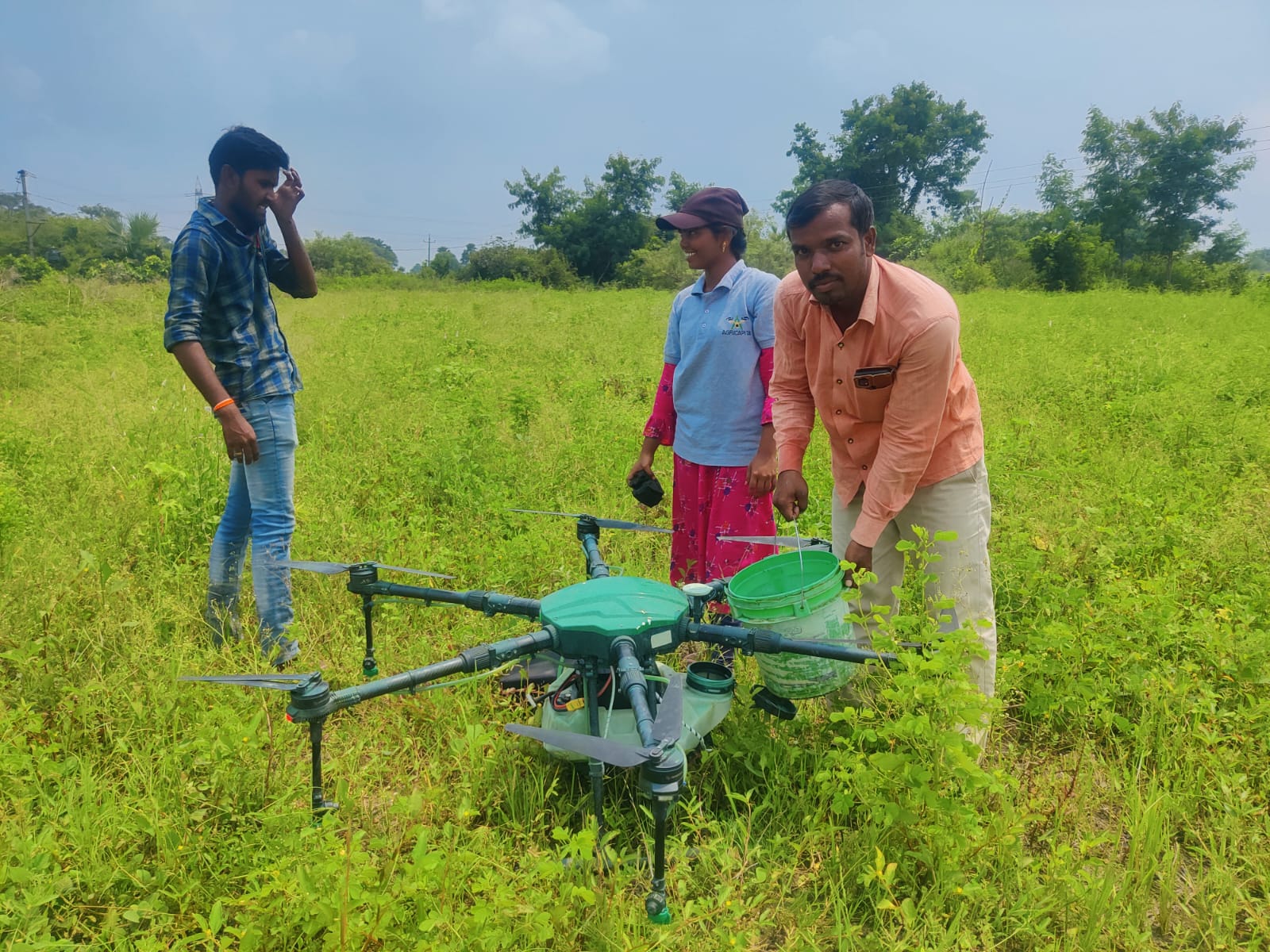Smart farming and small-holder farmers: Difficulties, Impact and Adaptation
The Application of Smart Farming Methods and the Impact of Crop Management
Smart Farming Technology (SFT) is a cutting-edge innovation that reduces waste and ensures good materials, equipment, and workforce in field activities. SFT can detect crop diseases early, avoid crop waste due to efficient crop harvesting, follow livestock behavior, and locate animals inside and outside farms (Idoje et al., 2021).
Integrating these technologies into agriculture and supply chains (Pivoto et al., 2018), SFT farming system, farmers’ motivations for adopting them, availability, and interest (Balafoutis et al., 2017). This new technology is valuable and easy to utilize on farms. Younger farmers adopted SFT faster than older farmers (Jithin Das et al., 2019). However, smart technologies and the Internet of Things have exacerbated environmental and cyber security risks (Gupta et al., 2020).
Even farmers doubt SFTs’ promise (Kernecker et al., 2020). Due to real-time data, projections, and automated agricultural operations, technology use and development have changed significantly in recent years (Wolfert et al., 2017). The main reason small farmers do not use SFT is its high cost. Since smart technology is usually too expensive for small-holder farmers, only large farms are thought to benefit (Lieder & Schröter-Schlaack, 2021). Small farms profit considerably from government incentives to use SFT. Farmers need better access to SFT-related information, training, advisory services, and reliable digital infrastructure (Knierim et al., 2019).
Sustainable agriculture can be achieved by diversifying technology, the system for producing crops and livestock, and the network connecting all stakeholders for improved food security (Walter et al., 2017). Crop productivity, decision-making, and management can benefit from these technologies. Using fewer synthetic chemicals and paying less for fuel, water, and energy reduces the environmental impact of agricultural practices (Javaid et al., 2022). SFT intends to promote productivity and improve land and water usage efficiency; thus, the government in third-world and major rising countries should help small farms utilize it (Said Mohamed et al., 2021). This may not affect farmers’ working hours, stress levels, or accident rates (Balafoutis et al., 2020).
Future technology will transform agriculture, automating planting and harvesting (Bacco et al., 2019). SFT can protect biodiversity, increase early use, and raise farming revenue. Even with data exchange, legal and regulatory issues occur. Data licensing terms must be clear and transparent (Wiseman et al., 2019), and a lack of understanding of technological advances could limit the development of new agricultural automation capabilities (Sharma et al., 2022). Additionally, the government, agricultural research institutes, commercial organizations, and non-governmental organizations must help farmers adopt and use smart farming technologies on a large scale (Eastwood et al., 2019). The government should create effective policies and have the support of farmers and stakeholders. Governance decisions are expected to shape the agriculture sector in the coming years and decades to protect the environment (Regan, 2019).

Farmers may encounter several issues while using smart farming methods on farmland
- High cost: Smart farming equipment, devices, and software may be too expensive for many small farmers. Maintaining and fixing this technology may cost more.
- Lack of skills and knowledge: Smart farming uses complex technologies and may require specialized skills. Many farmers may lack the expertise and experience to understand and use this technology effectively.
- Internet dependency: Smart farming requires enough reliable internet access to connect sensors, equipment, and platforms. However, poor internet availability in remote areas could hinder the performance of smart agricultural equipment.
- Data security and privacy: Smart farming generates and collects sensitive and important data, including crop yields, soil conditions, market price, etc. Unauthorized parties may hack, steal, or exploit this data, threatening farmers’ livelihoods and competitiveness.
- Environmental and social impacts: Smart farming may harm the environment and society by increasing chemical consumption, unequal water distribution, organic fertilizer use, and food miles. Smart farming may also affect farmers’ and communities’ customs.
Small farmers should consider the following while adopting smart farming:
- Information and communication: Small farmers require trustworthy and timely information and communication channels to learn about new technology, practices, and market trends. Peers, extension agents, media, and the internet can provide information and guidance. Mobile apps, websites, and social media allow them to connect with other farmers, professionals, and purchasers and share their experiences and feedback.
- Education and training: Smart farming technology and practices require proper training for small farmers. They must comprehend innovation’s pros and cons. They must learn to operate and maintain equipment, evaluate and interpret data, and make informed and optimal judgments.
- Incentives and support: Small farmers need incentives and help to embrace smart farming technologies and practices. They require economical, high-quality seeds, fertilizers, insecticides, and machinery. Storage and marketplaces that offer fair prices and avoid post-harvest losses are needed. Credit and insurance are needed to finance investments and manage risks. Policy and initiatives that encourage and enable the adoption and use of innovative technology and practices are also needed.
- Sustainability and effectiveness: Small farmers must employ smart farming technologies and methods that are sustainable and effective for their production environment and aims. They must consider water, soil, climate, pests, and diseases that affect crop management and productivity. They must assess the effects of innovation adoption on crop quality and quantity, income and livelihood, environment and natural resources, and social and cultural values.
Conclusion and recommendations
Farmers with appropriate training, practical competence, and the application of contemporary technologies in their farming practices may benefit from a reasonable output level.
Understanding farmers’ views, attitudes, and knowledge about new crops, fertilizers, pesticides, farming technology, and innovation distribution was essential to smart farming. The pros and cons of innovative methods for farmers, the environment, and natural resources were equally important.
Improved crop management and production require strategic and fundamental innovation. Extended use of synthetic pesticides depletes soil fertility; therefore, wise agricultural practices can protect and restore soil fertility.
Recommendations for improving farmers’ awareness of and adoption of innovation These included expanding opportunities and platforms for the diffusion and exchange of innovation within the farming community, increasing incentives and support for early adopters and innovators, and providing more information and guidance on the risks and benefits of new technologies. The article stressed that innovation should align with farmers’ needs, tastes, and values and that it is not just a technical problem but also a social and cultural one.
References
Bacco, M., Barsocchi, P., Ferro, E., Gotta, A., & Ruggeri, M. (2019). The Digitisation of Agriculture: a Survey of Research Activities on Smart Farming. Array, 3–4, 100009. https://doi.org/10.1016/J.ARRAY.2019.100009
Balafoutis, A. T., Beck, B., Fountas, S., Tsiropoulos, Z., Vangeyte, J., van der Wal, T., Soto-Embodas, I., Gómez-Barbero, M., & Pedersen, S. M. (2017). Smart Farming Technologies – Description, Taxonomy and Economic Impact. 21–77. https://doi.org/10.1007/978-3-319-68715-5_2
Balafoutis, A. T., van Evert, F. K., & Fountas, S. (2020). Smart Farming Technology Trends: Economic and Environmental Effects, Labor Impact, and Adoption Readiness. Agronomy 2020, Vol. 10, Page 743, 10(5), 743. https://doi.org/10.3390/AGRONOMY10050743
Eastwood, C., Ayre, M., Nettle, R., & Dela Rue, B. (2019). Making sense in the cloud: Farm advisory services in a smart farming future. NJAS – Wageningen Journal of Life Sciences, 90–91, 100298. https://doi.org/10.1016/J.NJAS.2019.04.004
Gupta, M., Abdelsalam, M., Khorsandroo, S., & Mittal, S. (2020). Security and Privacy in Smart Farming: Challenges and Opportunities. IEEE Access, 8, 34564–34584. https://doi.org/10.1109/ACCESS.2020.2975142
Idoje, G., Dagiuklas, T., & Iqbal, M. (2021). Survey for smart farming technologies: Challenges and issues. Computers & Electrical Engineering, 92, 107104. https://doi.org/10.1016/j.compeleceng.2021.107104
Javaid, M., Haleem, A., Singh, R. P., & Suman, R. (2022). Enhancing smart farming through the applications of Agriculture 4.0 technologies. International Journal of Intelligent Networks, 3, 150–164. https://doi.org/10.1016/J.IJIN.2022.09.004
Jithin Das, V., Sharma, S., & Kaushik, A. (2019). Views of Irish Farmers on Smart Farming Technologies: An Observational Study. AgriEngineering 2019, Vol. 1, Pages 164-187, 1(2), 164–187. https://doi.org/10.3390/AGRIENGINEERING1020013
Kernecker, M., Knierim, A., Wurbs, A., Kraus, T., & Borges, F. (2020). Experience versus expectation: farmers’ perceptions of smart farming technologies for cropping systems across Europe. Precision Agriculture, 21(1), 34–50. https://doi.org/10.1007/S11119-019-09651-Z/METRICS
Knierim, A., Kernecker, M., Erdle, K., Kraus, T., Borges, F., & Wurbs, A. (2019). Smart farming technology innovations – Insights and reflections from the German Smart-AKIS hub. NJAS – Wageningen Journal of Life Sciences, 90–91, 100314. https://doi.org/10.1016/J.NJAS.2019.100314
Lieder, S., & Schröter-Schlaack, C. (2021). Smart Farming Technologies in Arable Farming: Towards a Holistic Assessment of Opportunities and Risks. Sustainability 2021, Vol. 13, Page 6783, 13(12), 6783. https://doi.org/10.3390/SU13126783
Pivoto, D., Waquil, P. D., Talamini, E., Finocchio, C. P. S., Dalla Corte, V. F., & de Vargas Mores, G. (2018). Scientific development of smart farming technologies and their application in Brazil. Information Processing in Agriculture, 5(1), 21–32. https://doi.org/10.1016/J.INPA.2017.12.002
Regan, Á. (2019). ‘Smart farming’ in Ireland: A risk perception study with key governance actors. NJAS – Wageningen Journal of Life Sciences, 90–91, 100292. https://doi.org/10.1016/J.NJAS.2019.02.003
Said Mohamed, E., Belal, A. A., Kotb Abd-Elmabod, S., El-Shirbeny, M. A., Gad, A., & Zahran, M. B. (2021). Smart farming for improving agricultural management. The Egyptian Journal of Remote Sensing and Space Science, 24(3), 971–981. https://doi.org/10.1016/J.EJRS.2021.08.007
Sharma, V., Tripathi, A. K., & Mittal, H. (2022). Technological revolutions in smart farming: Current trends, challenges & future directions. Computers and Electronics in Agriculture, 201, 107217. https://doi.org/10.1016/J.COMPAG.2022.107217
Walter, A., Finger, R., Huber, R., & Buchmann, N. (2017). Smart farming is key to developing sustainable agriculture. Proceedings of the National Academy of Sciences of the United States of America, 114(24), 6148–6150. https://doi.org/10.1073/PNAS.1707462114/ASSET/46D243E5-C255-467E-A465-3EA021385443/ASSETS/GRAPHIC/PNAS.1707462114FIG02.JPEG
Wiseman, L., Sanderson, J., Zhang, A., & Jakku, E. (2019). Farmers and their data: An examination of farmers’ reluctance to share their data through the lens of the laws impacting smart farming. NJAS – Wageningen Journal of Life Sciences, 90–91, 100301. https://doi.org/10.1016/J.NJAS.2019.04.007
Wolfert, S., Ge, L., Verdouw, C., & Bogaardt, M. J. (2017). Big Data in Smart Farming – A review. Agricultural Systems, 153, 69–80. https://doi.org/10.1016/J.AGSY.2017.01.023










































































